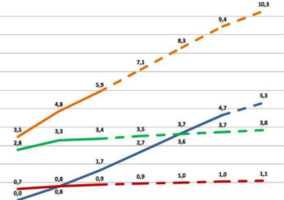Os contornos de sentido do termo design no fomento ao artesanato no Sebrae
O desenvolvimento de projetos de fomento ao artesanato com fins socioeconômicos no Brasil têm surgido em grandes números em todas as regiões do país em maior quantidade desde a década de 1990 e tem sido um dos principais responsáveis pela aproximação cada vez mais recorrente entre designers e artesãos. O Sebrae é hoje a maior agência de fomento ao micro empreendedorismo do Brasil e também a agência a realizar o maior número de projetos de fomento ao artesanato em todos os estados do país. Movimenta significativamente a economia do segmento e está relacionada ao desenvolvimento de políticas públicas aplicadas ao artesanato, e assim, ajuda a determinar as estratégias futuras para o setor. É também o maior responsável por facilitar o encontro entre entre designers e artesãos, e, por possibilitar estes encontros também baliza a maneira pela qual tais encontros são praticados, acionando designers através de consultorias oferecidas pelos profissionais da área àqueles aos quais os projetos se destinam. Esta pesquisa tem por fim perceber que design é esse que aplicamos no fomento ao artesanato, analisando os modos com que o termo design vem sendo acionado pelo Sebrae, buscando compreender como se dão as interferências destes conceitos nas práticas de designers no fomento ao artesanato realizados pela agência, através da análise de documentos gerados pelo Sebrae sobre as categorias design e artesanato, bem como através da pesquisa de campo realizada em Recife/PE que pretende investigar qual é o lugar do Sebrae nestes processos através dos discursos sobre as práticas de atores envolvidos nesses contextos no Pernambuco. Espera-se que através do investimento de pesquisa proposto nesta dissertação, possamos levantar questões que permeiam o campo do design quando se aproxima do artesanato, a fim de pôr em discussão os usos do design que emergem dos discursos sobre o fomento ao artesanato.
The development of projects to promote handicrafts for social and economic purposes in Brazil has arisen in large numbers in all regions of the country in greater quantity since the 1990s and has been one of the main responsible for the increasingly recurrent approximation between designers and artisans. Sebrae is today the largest microenterprise development agency in Brazil and also the agency that carries out the largest number of handicraft development projects in all the states of the country. It significantly moves the economy of the segment and is related to the development of public policies applied to the craft, and thus, helps to determine the future strategies for the sector. It is also the main responsible for facilitating the meeting between designers and artisans and, by enabling these meetings, also marks the way in which these meetings are practiced, triggering designers through the consulting services offered by the professionals of the area to those to whom the projects are intended. The aim of this research is to understand what design we are applying in the promotion of handicrafts, analyzing the ways in which the term design has been activated by Sebrae, seeking to understand how the interferences of these concepts are given in the practices of designers in the promotion of handicrafts carried out by Through the analysis of documents generated by Sebrae on the categories of design and crafts, as well as through the field research carried out in Recife / PE, which intends to investigate the place of the Sebrae in these processes through the discourses on the practices of actors involved in the Contexts of promotion to handicrafts in Pernambuco. It is hoped that through the research investment proposed in this dissertation, we can raise questions that permeate the field of design when approaching crafts, in order to discuss the uses of design that emerge from the discourses on the promotion of crafts.
